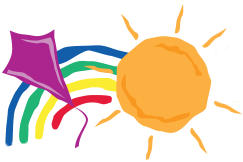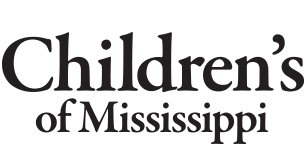Conditions and Treatments
- Children’s Plastic and Reconstructive Surgery Home
- Children's Craniofacial Services
-
Conditions and Treatments
- Conditions We Treat
-
More Information
- Ear deformities: microtia, anotia and constricted ear
- Cleft Lip and Palate
- Congenital nevus
- Craniosynostosis
- Dermoid cyst
- Nose deformities, nasal breathing problems
- Orbital hypertelorism
- Pierre Robin Sequence/Syndrome
- Positional Plagiocephaly: Flat Head Syndrome
- Prominent ears
- Velopharyngeal dysfunction
- Frequently Asked Questions
- Meet Our Team
- Patient/Family Resources
- Visit Preparation
Conditions We Treat
 Apert syndrome: A rare genetic condition that can cause craniosynostosis and other differences in the face, hands, and feet. Certain fingers or toes may be webbed. Some children may have intellectual disabilities as well. The severity of symptoms can vary.
Apert syndrome: A rare genetic condition that can cause craniosynostosis and other differences in the face, hands, and feet. Certain fingers or toes may be webbed. Some children may have intellectual disabilities as well. The severity of symptoms can vary.
Beckwith-Wiedemann spectrum: A genetic condition characterized by overgrowth patterns. These can vary in severity from child to child. Some children may have asymmetrical growth, with one side of the body or one structure of the body that is larger than the other. Some may have an enlarged tongue.
Binder syndrome: A rare birth difference with the underdevelopment of the central area of the face, especially the nose and upper jaw. The nose may appear abnormally short and flat. The symptoms and severity can differ from child to child.
Brachial plexus and peripheral nerve injuries: The brachial plexus is the set of nerves that control movement of the shoulder, arms, hands and fingers. In children, injuries to the brachial plexus can happen during a difficult birth or due to trauma.
Breast and chest wall deformities: An abnormal structure of the chest. Common examples include a sunken chest, called pectus excavatum, or a protruding chest or "pigeon" chest, called pectus carinatum.
Cleft lip and palate: Birth differences that are seen when a baby's mouth or lips don't join or form properly in the womb. A cleft lip is an abnormal opening or split in the upper lip. It may be small or go all the way into the nose. A cleft palate is an abnormal opening or split in the roof of the mouth. Read more information about cleft lip and palate.
Congenital nevus: Moles, usually present at birth. They are usually noncancerous, but a small percentage, typically larger ones, may transition into a type of skin cancer.Read more information about congenital nevus.
Craniofacial clefts: Any kind of difference of the face or head that includes an abnormal opening or gap. Severe clefts can affect both bones and soft tissue. A cleft lip is one type of craniofacial cleft.
Craniosynostosis: A birth difference that causes one or more of the bones of an infant's head to fuse together too soon. In normal development, a newborn has spaces between the bones of the skull filled with flexible material. This allows the head to expand as the baby grows. The majority of these bones normally fuse in the teenage years. A baby with craniosynostosis may have an abnormally shaped head as it grows. Read more information about craniosynostosis.
Crouzon Syndrome: A rare genetic condition that includes craniosynostosis. Certain bones in the face may also be affected. Babies with the syndrome may also have bulging eyes and an unusually small nose and jaw. Some have dental problems, hearing loss and a cleft lip/palate. The range and severity of symptoms can vary from child to child.
Cutis Aplasia: A rare difference that causes patches of skin to have missing layers. This commonly occurs on the scalp. The patch is usually covered with a thin, transparent membrane.
Deformational plagiocephaly: A flat spot on a baby’s head, often caused when a child lies in one position for too long. Also called positional plagiocephaly. Read more information.
Dermoid cyst: A small noncancerous lump under the skin that is usually present at birth. Many occur near the eye. They develop during pregnancy when skin and skin structures become trapped. They sometimes contain hair or even teeth. Read more information about dermoid cysts.
Ear deformities:
- Microtia: A birth difference that causes the external part of a baby’s ear to be extremely underdeveloped, to the point of almost being completely absent. Read more information.
- Anotia: A birth difference that causes the external part of a baby’s ear to be completely absent. Read more information.
- Constricted ear: Sometimes called cup ear or lop ear, this is an abnormal shape of the top rim of the ear. Part of the ear may look folded forward. Read more information.
- Prominent ear: An ear that sticks out more than normal. It is not usually a medical problem, but it can be of cosmetic and social concern. Read more information.
Encephalocele: A rare birth difference that causes a sac-like protrusion from an opening in the skull. Most of these sacs occur at the back of the head, the top of the head, or between the forehead and the nose. It is a defect of the neural tube, a narrow channel that normally closes in the third or fourth week of pregnancy to form the brain and spinal cord.
Hemangiomas: A type of vascular birthmark, usually red, made up of blood vessels that haven't formed correctly.
Hemifacial microsomia: A birth difference where one side of the face is smaller, underdeveloped, or has missing parts. It usually affects the lower part of the face.
Jaw deformities, abnormal bite: Any abnormality of the size, position, orientation, shape, symmetry or composition of the jaw. Jaw abnormalities may affect how well the teeth fit together when the mouth is closed.
Micrognathia: A smaller than normal jaw. It is seen in patients with Pierre Robin sequence.
Muenke Syndrome: A rare genetic difference that causes craniosynostosis. This results in abnormal shapes in the head and face. Depending on the severity of symptoms, it can also cause abnormalities in the hands or feet, hearing loss and developmental delays.
Nose deformities, nasal breathing problems: Any abnormal shape and/or structure of the nose. Deformities can be present at birth or result from a medical condition or trauma. Some can cause difficulty breathing. Read more information about nose deformities and nasal breathing problems.
Opitz syndrome: Also called Bohring-Opitz Syndrome. A rare genetic condition that affects many systems and structures in the body. It is evident at birth. Although the symptoms can vary from child to child, most remain quite small. Many have a red or pink birthmark on the forehead or eyelids. The elbows commonly are bent with the wrists angled outwards. Many also have a cleft lip and/or palate along with sleep apnea.
Orbital hypertelorism: Eyes that are set unusually far apart. Read more information about orbital hypertelorism.
Pfeiffer syndrome: A rare genetic disorder that causes craniosynostosis, along with deviated thumbs and big toes. Most children also have protruding eyes, a small upper jaw and a beaked nose. Some children have hearing loss and dental problems. The condition can range in severity.
Pierre Robin sequence: A genetic condition that causes a smaller than normal lower jaw, displacement of the tongue toward the back of the mouth, and airway obstruction. It is sometimes accompanied by a cleft palate. Read more about Pierre Robin sequence.
Saethre-Chotzen syndrome: A rare genetic condition that causes craniosynostosis. Certain fingers or toes may be joined or webbed. Some children with this condition may be short with small or unusually shaped ears. Symptoms can vary.
Stickler syndrome: A condition of connective tissue that causes eye abnormalities, including near-sightedness, hearing loss, and joint problems. These patients may also present with Pierre Robin sequence.
Syndactyly: Joined, sometimes called webbed, fingers or toes.
Thumb absence/hypoplasia: A missing or extremely underdeveloped thumb.
Thumb duplication: An extra thumb.
Treacher Collins syndrome: A rare genetic condition that can vary greatly in symptoms and severity. Abnormalities in the head and face can occur, including underdevelopment of the cheeks, jaw, palate and mouth. In some children this causes feeding and breathing problems. Some children have abnormalities in their eyes and ears, including hearing loss.
Trigger finger/thumb: A finger or thumb that catches, pops, or gets stuck in a bent position.
Van der Woude syndrome: Also called lip pit syndrome, this condition affects the development of the face. Children usually have pits near the center of the bottom lip that usually appear moist. Some have missing teeth. Many are born with a cleft lip and/or palate.
Velopharyngeal dysfunction: Improper closing of the velopharyngeal port, which separates the oral and nasal cavities during speaking and swallowing. When this does not work correctly, air leaks into the nasal passages when a person speaks. Learn more about velopharyngeal dysfunction.



 UMMC
UMMC